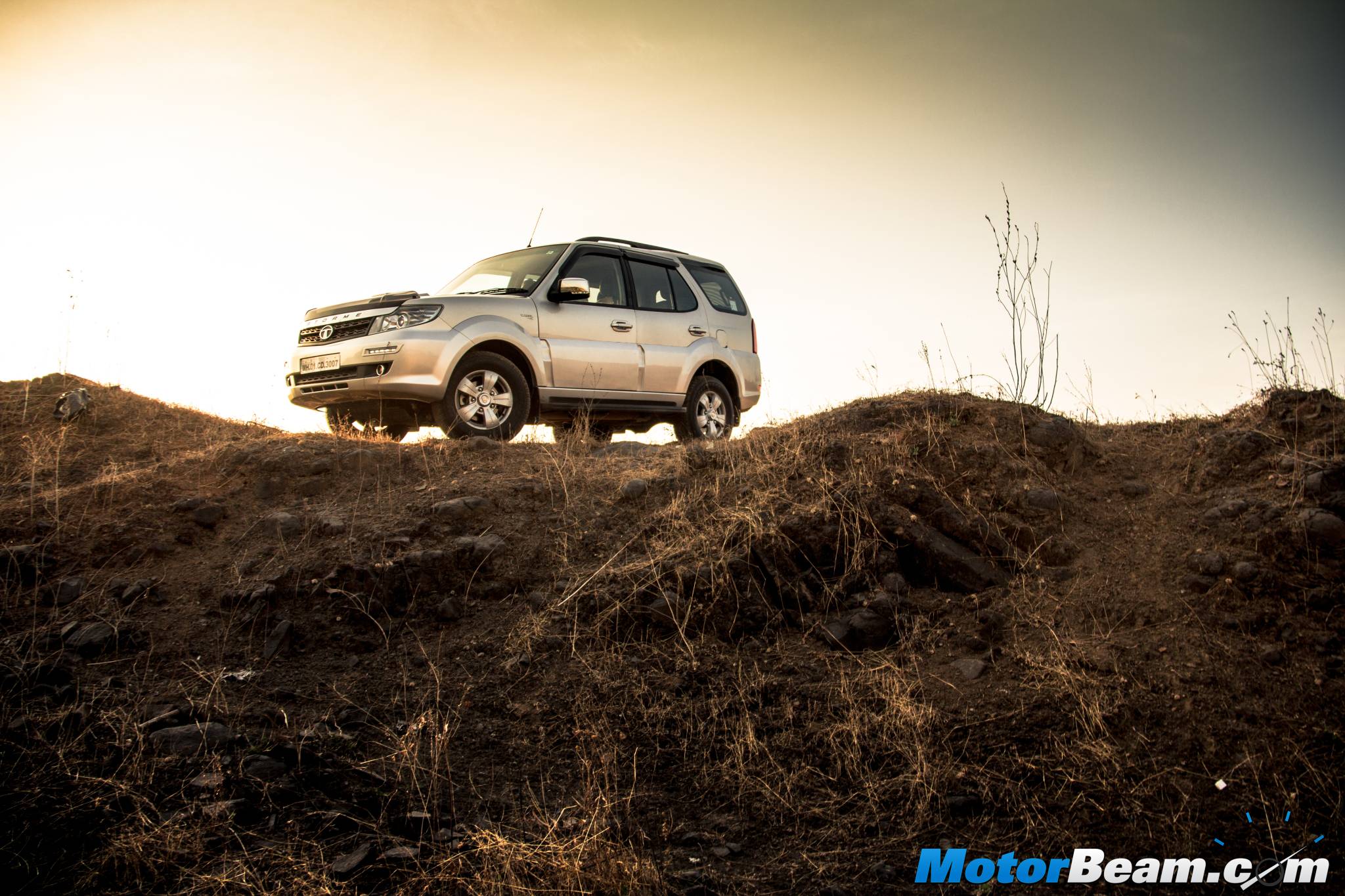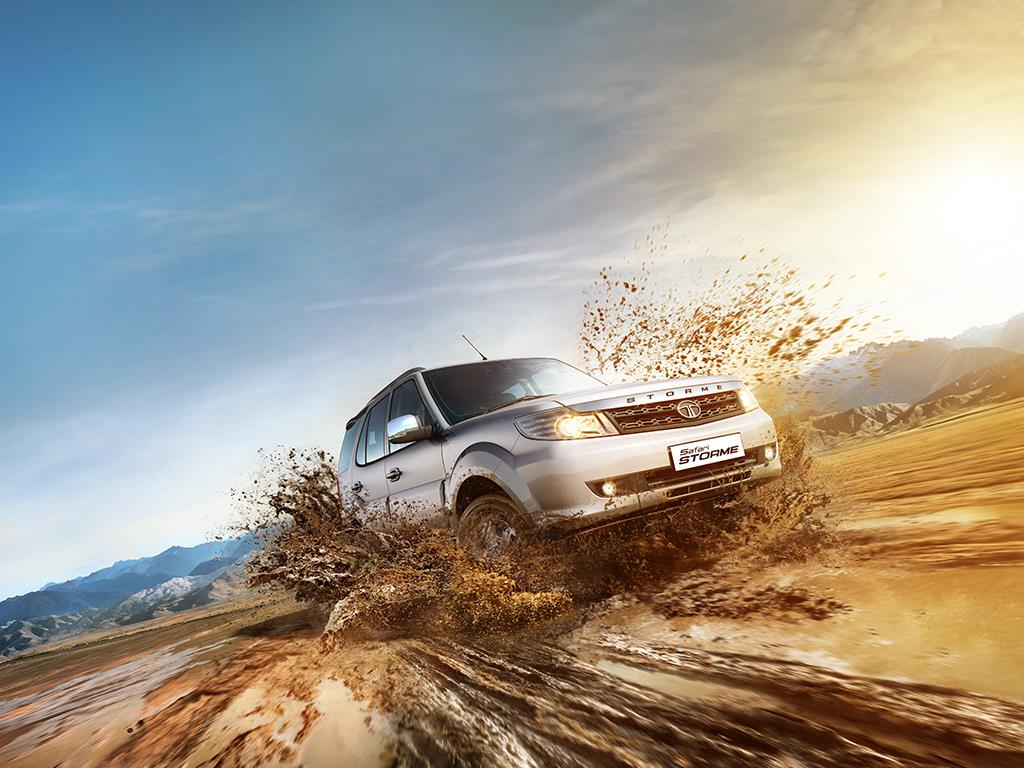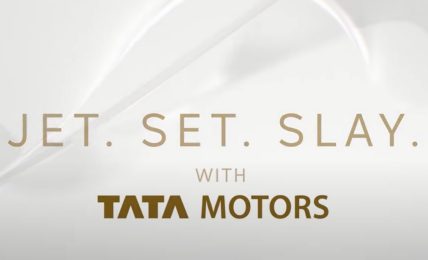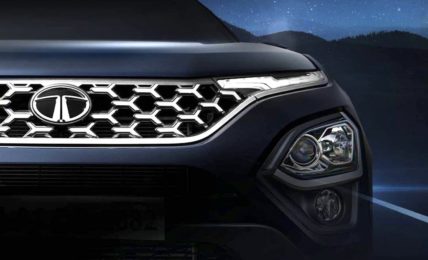
Tata Safari Storme Varicor 400 Review
Car Tested: 2016 Tata Safari Storme Varicor 400 VX 4×4; Road Test No. 642
Price OTR Mumbai: Rs. 15.77 -17.37 lakhs
The higher torque in the Safari Storme Varicor 400 makes a big difference in its performance
Tata Motors gave the Safari Storme two updates last year, first came the facelift which got revisions to the interiors with minor tweaks to the exterior and a slew of added equipment but the engine remained the same although there were mechanical tweaks to make the SUV more reliable and easy to live with. Now, Tata Motors has given the Safari Storme another update but this time, it’s the engine which gets more power and torque, the increment in output being reserved for the top spec VX trim only. The Safari is a heavy vehicle so an improvement in performance is always welcome, we test the most powerful Tata Safari to see how the performance increment helps.
Motor Quest: The Safari Storme was launched in 2012 as the new generation Safari while Tata Motors chose to keep the old DICOR model still on sale. A facelift was given to the SUV in mid-2015 while the Varicor 400 version was launched just last month.
Our test Safari is Tata’s marketing car with a few accessories
Exteriors – There are no changes to the design of the Safari Storme (other than the Varicor 400 badges on the front fender) as the overall body shell and dimensions will remind you of the old Safari too. While loyalists continue to like this timeless design of the Safari, many feel that the car needs some extensive cosmetic changes in these modern times and we agree to a certain extent. Our test car was equipped with a slew of accessories including LED daytime running lights, wind deflector and hood scoop, all of which do look good on this more powerful version of the Safari.
No changes to the interior which lacks a lot of equipment
Interiors – There are no changes to the interiors either so the Safari Storme continues with the same two-tone cabin which is lacking heavily on the equipment front, specially when you compare it with its closest rival, the Mahindra Scorpio. Tata Motors did give the Safari some added equipment recently but still the vehicle seems lacking with no multi-function display on the instrument cluster, single-DIN audio system and no climate control AC. The cabin is big though with a ton of space but the last row of seats should be front facing, about time.
Varicor 400 badges are the only giveaway about the higher output
Performance – The only talking point about the Tata Safari Storme Varicor 400, as the name suggests, is the 400 Nm of torque (peaks between 1750-2500 RPM) that the 2.2-litre diesel engine now pumps out. While the torque output has seen a massive increase of 80 Nm, up from 320 Nm on the lesser powerful version, power has only increased by 6 PS, up from 150 PS to 156 PS at 4000 RPM. The 4-cylinder engine is high on specs, with 16-valves, DOHC and Variable Turbine Technology (VTT in Tata speak). So on paper, the 400 Nm Safari might just brew up a storm but out on the road, things are very different.
The additional torque makes a big difference to the mid-range
The Safari Storme feels more punchy now & has better highway performance
The Tata Safari Storme is a heavy car and all that weight does affect the vehicle’s performance. But that said, the added punch can be immediately felt as the class-leading torque makes the Indian SUV spin all its wheels when you throttle hard. Launch it aggressively and there is a lot of wheel-spin, specially in 2-wheel drive mode and if you aren’t careful with the throttle, you can oversteer on slippery road surfaces (gravel or wet roads). But all this power is only available in the mid-range as that’s the strong suit of the Varicor 400 motor.
The Varicor 400 is the fastest of all Safari Storme models
One really needs to hit the open roads to appreciate the added punch of the Tata Safari Storme as low-end lag is ample and the turbo doesn’t spool up in all its glory till 2000 RPM, but still the powerplant is tractable enough for city duties. As can be seen in the timings above, the Varicor 400 is faster than the old Safari 320 in the 0-100 km/hr sprint, taking just 12.78 seconds and thereby being more than a second quicker. The motor redlines at 4800 RPM and becomes very audible in the top-end, that too not in a refined manner while the ton comes up in third gear. Fuel economy has naturally seen a minor hit (13.9 km/l on the Varicor 400 vs 14.1 km/l on the 320 as per ARAI) but the vehicle still manages double digit numbers in real world driving situations.
The 6-speed gearbox gives the Safari better cruising ability
The higher state of tune for the 2.2-litre oil burner needs a new gearbox to manage all that torque, so out goes the G76 5-speed transmission in lieu of a 6-speed unit (G6450) with the gear lever now getting a matte silver finish instead of black and chrome. The additional gear gives the Safari Storme better cruising ability on the highway with the ton in top gear resulting in just 1950 RPM on the tachometer. First gear is good enough for 36 km/hr, second for 69 km/hr while third and fourth take the Safari to 109 km/hr and 140 km/hr respectively (GPS tested). The clutch is on the heavier side and the new gearbox continues with the rubbery feel, requiring some effort when you do quick shifts. An automatic gearbox would work wonders on this new powertrain.
The handling is good but there is a lot of roll when cornered hard
Driving Dynamics – There are no changes to the suspension of the Safari Storme and thus the ride and handling remains the same as before. With the launch of the Storme, Tata Motors underpinned the Safari with the new X2 platform which uses a hydroformed chassis, resulting in much predictable driving dynamics. The Storme handles quite well for a body-on-frame SUV that tips the scales at over two tonnes. There is a lot of body roll to deal with, but when you are sitting so high up, getting through corners fast is surely not on your agenda. Drive the Safari calmly and you are certain to enjoy the true SUV feel offered by the vehicle.
Ride quality is fantastic with high speed stability being very good too
No mechanical changes means the Tata Safari Storme drives exactly like before
The Safari Storme uses a hydraulic steering which is heavy and thus requires a bit of effort to pilot in stop-go traffic. The steering does weigh up with speed and the car is quite stable too when you get past triple digit numbers on the speedometer. What truly excels on the Safari is the ride quality as the suspension does a fantastic job of absorbing everything in its stride, big thanks to the long travel suspension. Braking performance is good too but stand hard on the pedal and there is some nose dive, naturally.
Tata should equip the Safari with more safety features now, it is 2016!
Safety and After Sales Service – The Safari Storme Varicor 400 comes with dual airbags and ABS as standard while the ladder frame makes the car very rugged. But at a price upwards of Rs. 15 lakhs, the Indian automaker should be offering side airbags at least, more so when its closest rival does the same. Tata Motors’ service needs improvements and the company has been working hard on the same with multiple measures to ensure post sales customer satisfaction.
A powerful SUV that could do with some modern touches
Verdict – There was a time when the Tata Safari was underpowered (TCIC days) but today it has more than enough power but lacks on the equipment front. It’s a capable off-roader and a fast SUV which also excels in terms of comfort by offering a big cabin with supportive seats and a ride quality which few can match at this price point. But the Indian market is more feature driven or rather value drive with higher performance not equating to value for most buyers. At a premium of under Rs. 15,000/- over the same trim 320 Nm variant, the Varicor 400 sounds like a complete steal but only to Safari lovers.
The Tata Safari Storme is an SUV which has huge potential, more so considering how many units Mahindra manages to sell in the same price bracket. With minor changes, Tata Motors isn’t going to make a big impact and a more comprehensive update is needed if they want to boost sales of their popular SUV.
The optional accessories do give the Safari a mean streak
What’s Cool
* Macho appearance still appeals a lot to traditional SUV and Safari fans
* Boost in power and torque wasn’t the need of the hour but is hugely welcome
* Comfort levels are fantastic, the Safari Storme is a mile muncher
What’s Not So Cool
* Design starting to feel dated for both the exterior and interior
* Shockingly under-equipped for the price with even basic essentials like a reverse camera missing
* Rubbery gearbox takes away from the otherwise fantastic driving experience
Alternatives: Mahindra Scorpio, Renault Duster, Hyundai Creta, Mahindra XUV500
The Safari Storme can probably help you reclaim your life
Testers’ Note:
A beast of an SUV, the Safari offers bang for the buck real estate
Further Reading –
Tata Safari Storme Review
Tata Safari Storme Long Term Review
Tata Safari Storme vs Mahindra Scorpio vs Renault Duster AWD
Tata Safari Storme vs Mahindra XUV500 vs Skoda Yeti vs Renault Duster
Picture Editing – Sri Manikanta Achanta




